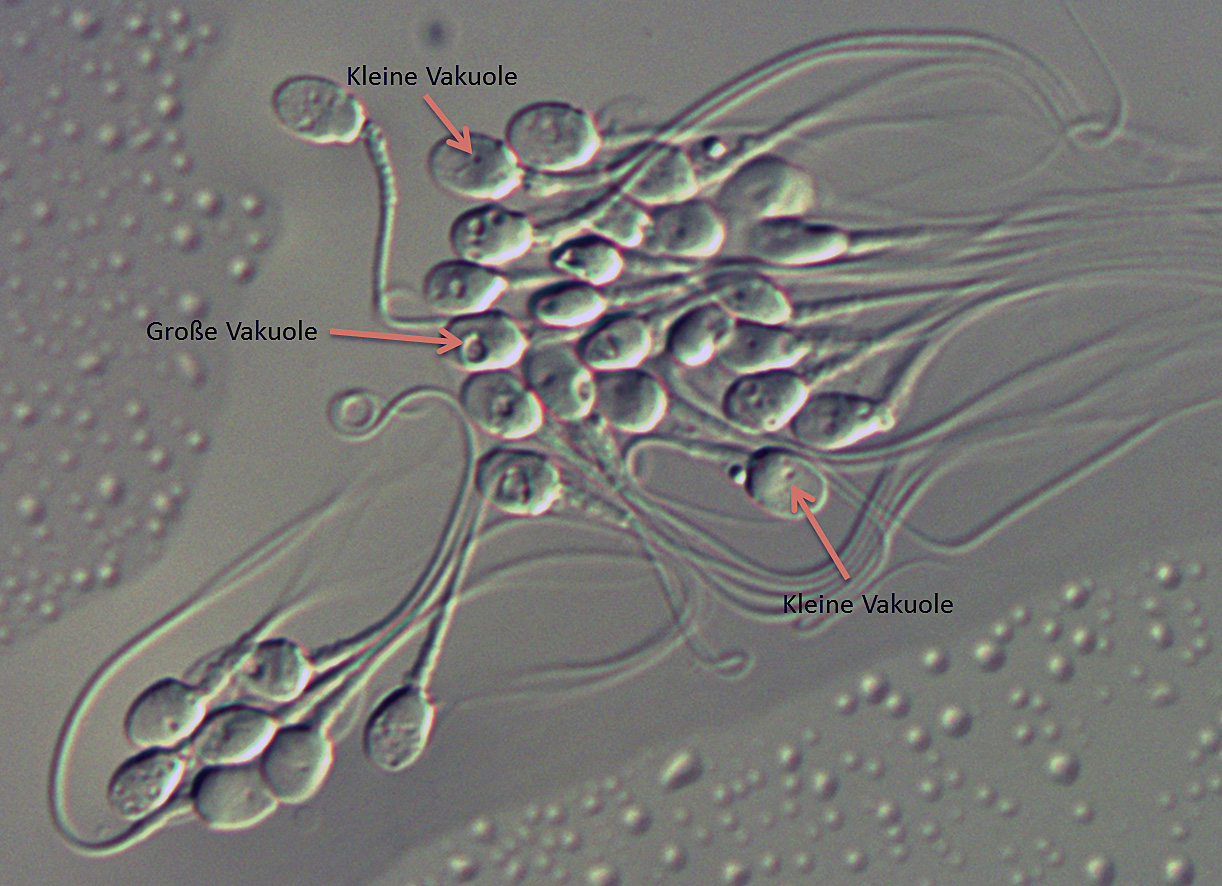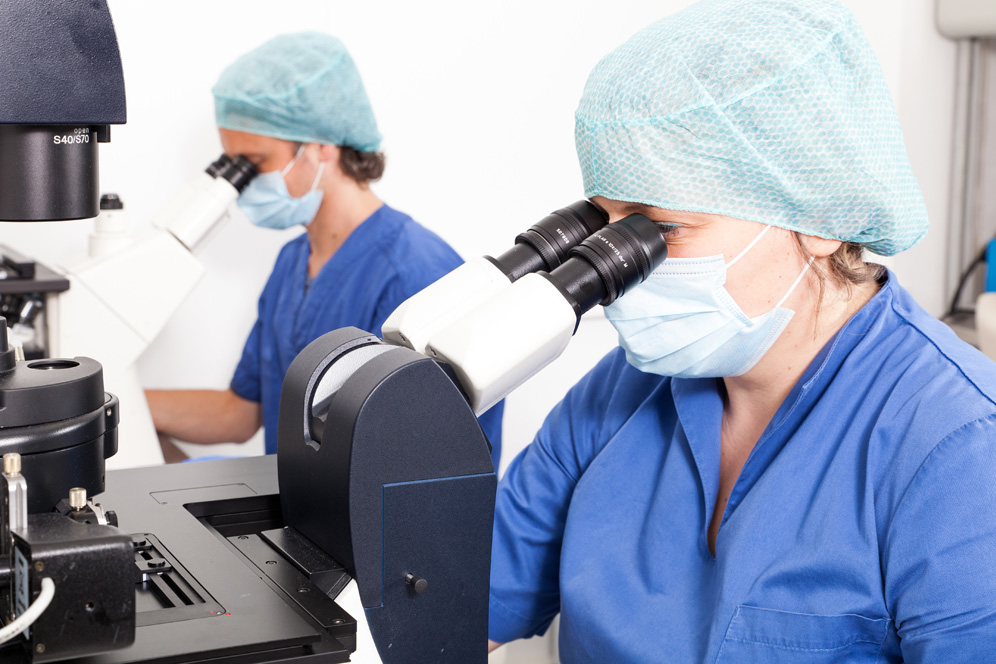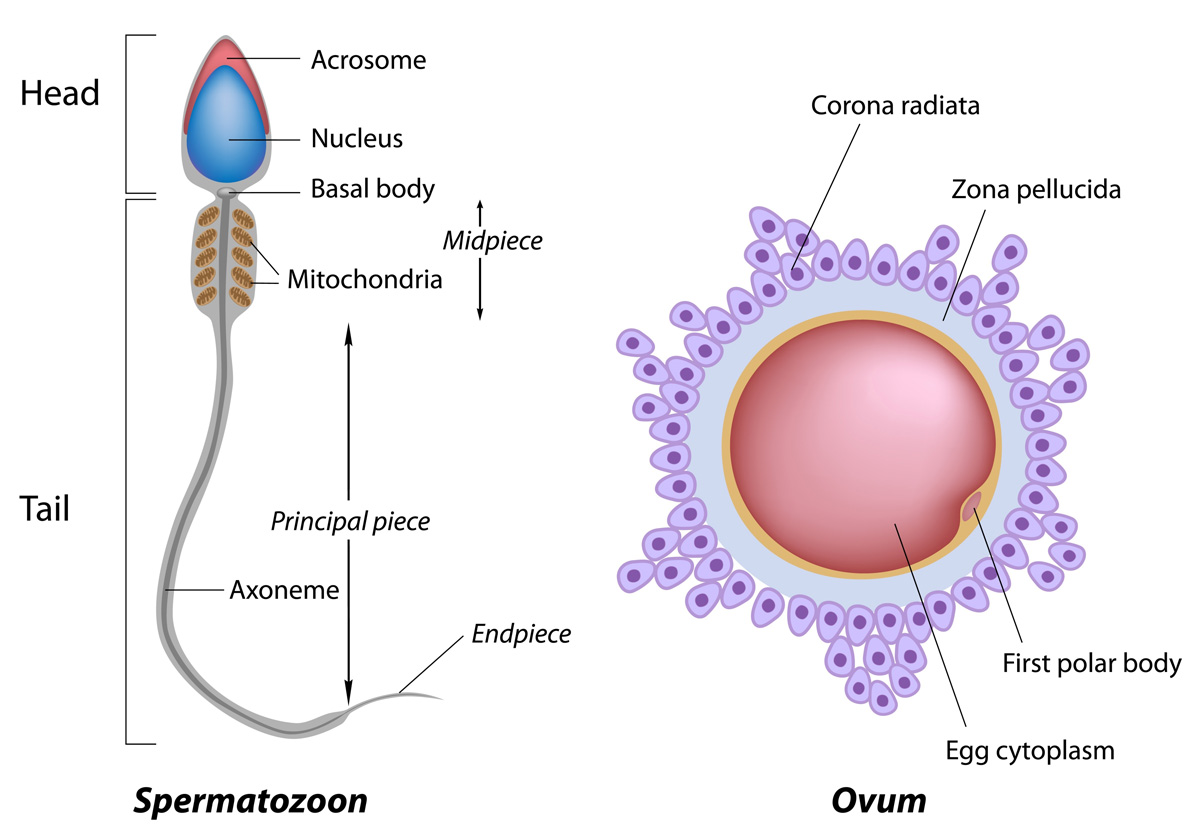Egg and sperm cell are of equal importance for the development of the embryo. A closer look at the sperm factor suggests that the assessment of sperm quality followed by the selection of appropriate spermatozoa for the fertilization of the oocyte are important steps on the path towards the much longed-for child.
During fertilization, signaling cascades are triggered inside the oocyte by the fertilizing sperm. During the fusion of the sperm and oocyte plasma, the release of a factor carried within the sperm head changes the calcium concentration in the oocyte cytoplasm. This again induces a series of subsequent reactions, finally enabling the fertilization of the oocyte.
It will therefore become all the more important to perform a comprehensive analysis of sperm morphology (shape, structure). An existing impairment (e.g. identification of vacuoles = crater-like structures in the sperm head) may have negative impacts. Already at the end of the 1990s, electron microscopic investigations revealed a correlation between the presence of vacuoles and the impairment of natural male fertility (Berkovitz et al., 1999).
Laboratory technique IMSI allowing detailed analyses
To counteract this, it is necessary to use modern laboratory techniques, such as the IMSI procedure – Intracytoplasmic Morphologically Selected Sperm Injection. By means of special sperm processing and preparation, the IMSI procedure allows for a close look at the spermatozoa. For example, it is possible to visualize existing vacuoles and determine how many there are and how large they are.


Photos © IVF Centers Prof. Zech 2017
Using a high-resolution microscope, human spermatozoa are analyzed in real time. This allows for a much more detailed investigation of the sperm, especially as regards their shape and structure. The analysis referred to above is based on a specific classification system.
Example provided by the IVF Centers Prof. Zech
(Classification by Vanderzwalmen criteria, 2008)
SPZ Class I
- NF: Normal Form, without Vacuoles
- NFSV (<4%): Normal Form, 1 Small Vacuole
SPZ Class II
- NFLV: Normal Form, 1 Large Vacuole
- NFSV (n): Normal Form, Small Vacuoles (number)
- NFL/SV (n): Normal Form, Large + Small Vacuoles (number)
SPZ Class III
- AFL/SV (n): Abnormal Form, Large + Small Vacuoles (number)
- AFLV: Abnormal Form, 1 Large Vacuole
- AF: Abnormal Form, without Vacuoles
The results of the investigated parameters in the respective SPZ Class are expressed in percentages.
Overall assessment of sperm morphology is performed by a biologist specializing in this field. The key requirements for the IMSI procedure are well-equipped laboratories and long-standing expertise, according to Prof. Dr. Herbert Zech, specialist in reproductive medicine and founder of the IVF centers of the same name:
“In 2005, for the first time worldwide, we introduced a standardized IMSI procedure at our IVF Centers. This treatment method contributes to improving the chances of achieving pregnancy by selecting the best sperm in terms of morphology for egg fertilization. In addition, we use the IMSI technique for detailed analysis as part of the spermiogram. Today, our team can fall back on the know-how gained from over 12 years of successfully using the IMSI procedure in IVF therapies.”
IMSI technique may also be used as part of the spermiogram
Already prior to undergoing fertility treatment, there is the option to have a detailed morphologic analysis carried out in addition to evaluating male reproductive capacity by means of semen analysis using only WHO criteria. This is where the IMSI technique comes into play. Furthermore, semen analysis may be extended with a new and innovative diagnostics which has recently been established at the IVF Centers Prof. Zech. In addition to WHO-criteria and an in-depth morphologic examination, this diagnostics includes the measurement of oxidative stress, a detailed vitality test, DNA fragmentation testing as well as the assessment of chromatin maturity in sperm.
Scientifically-based and tested procedure
In short: numerous scientifically sound studies (see links) on the successful outcome of fertility treatment in terms of its correlation with sperm quality reveal, for instance, that a high degree of vacuolization is associated with pathologic conditions in sperm. Moreover, it could be proven that the selection of the most suitable sperm in terms of morphology resulted in higher fertilization rates, a higher number of (top-) blastocysts on day 5 of in vitro culture and an increase in pregnancy rates.
When comparing outcomes of fertility treatment with IMSI versus treatment with ICSI (Intracytoplasmic Sperm Injection), it seems that detailed sperm analysis and selection help significantly reduce the risk of congenital malformations. These results from a recent study (Cassuto et al., 2014) were also confirmed by a previously unpublished multi-center study, involving the IVF Centers Prof. Zech.
Links:
» Different Levels of DNA Methylation Detected in Human Sperms after Morphological Selection Using High Magnification Microscopy
(Study | www.hindawi.com)
(Study | https://www.ncbi.nlm.nih.gov)
» Morphological alterations in protamine-deficient spermatozoa.
(Study | https://www.ncbi.nlm.nih.gov)
» Correlation between DNA defect and sperm-head morphology
(Study | https://rbmojournal.com)
» Large nuclear vacuoles are indicative of abnormal chromatin packaging in human spermatozoa.
(Study | https://www.ncbi.nlm.nih.go)
(Study | https://www.ncbi.nlm.nih.go)
(Study | https://www.ncbi.nlm.nih.gov)
» High-power microscopy for selecting spermatozoa for ICSI by physiological status.
(Study | https://www.ncbi.nlm.nih.gov)
» Significance of large nuclear vacuoles in human spermatozoa: implications for ICSI.
(Study | https://www.ncbi.nlm.nih.gov)
(Study | https://www.ncbi.nlm.nih.gov)
» How to improve IVF-ICSI outcome by sperm selection.
(Study | https://www.ncbi.nlm.nih.gov)
» Intracytoplasmic morphologically selected sperm injection: a prospective randomized trial.
(Study | https://www.ncbi.nlm.nih.gov)
(Study | https://www.ncbi.nlm.nih.gov)
» Low birth defects by deselecting abnormal spermatozoa before ICSI.
(Study | https://www.ncbi.nlm.nih.gov)
(Study | https://www.ncbi.nlm.nih.gov)
(Page | https://www.fertility-treatment-blog.com)

















